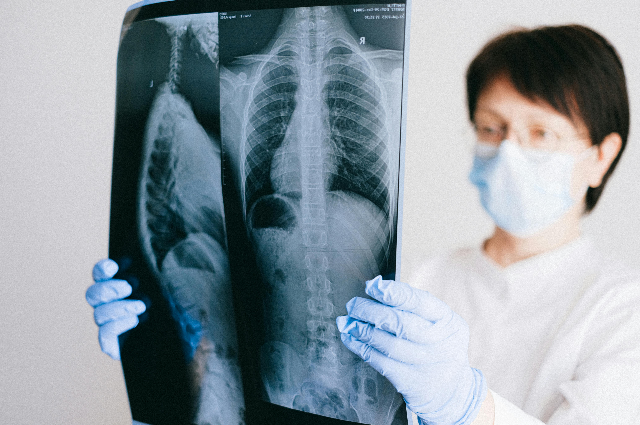
Researchers have successfully merged various X-ray imaging techniques to develop multi-contrast images capable of identifying hazardous materials like explosives across numerous complex scenarios. This innovative approach which is enhanced by the integration of readily accessible machine learning algorithms for material classification holds significant potential for security screening and broader applications in both the life and physical sciences.
"This method is especially proficient at differentiating objects with very similar elemental compositions," explained Thomas Partridge, the lead researcher from University College London. "It can be effectively employed in airport security or any continuous scanning operation to scrutinize materials flagged as suspicious during an initial quick scan such as those using traditional X-ray systems."
Published in the journal “Optica”, the study demonstrated the method's high efficacy in precisely detecting and identifying explosives within nearly 4,000 scans of both threatening and non-threatening materials that were concealed in bags or covered by various objects. The researchers achieved an impressive recall rate of 99.68% with only a single false negative among the threat-bearing cases.
"Although further research is necessary, this technique could also have promising applications in medical imaging," noted Partridge. "Traditional X-ray imaging often struggles to differentiate between healthy and diseased tissues but other studies suggest that phase contrast imaging might capture textures that can distinguish between healthy and benign tissues."
This groundbreaking work signifies a major step forward in the use of advanced X-ray imaging technologies by offering enhanced precision and reliability in both the security and medical fields. As the research progresses, these technologies could revolutionize the way we detect and analyse hidden threats and medical conditions.
X-ray Gets a Makeover: New Technique Sees Through Security Threats with Ease
Imagine a security scanner at the airport that can not only see your carry-on bag's contents but also identify hidden dangers with near-perfect accuracy. Researchers have developed a promising new X-ray imaging method that does just that. This breakthrough has the potential to revolutionize security screening and even find applications in the medical field.
Combining Strengths for Sharper Images
Traditional X-ray machines work by measuring how much X-ray radiation gets absorbed by an object. This is useful, but it struggles to differentiate between materials with similar compositions like explosives and everyday items. The new technique tackles this limitation by cleverly combining multiple X-ray imaging methods.
Think of it like using different filters on a camera. The new method uses conventional X-ray data alongside additional information from two other techniques: refraction and dark-field imaging. These extra channels provide a more detailed picture by revealing slight differences in edges, textures and even the grain structure of materials.
Unveiling the Hidden: Highly Accurate Threat Detection
This multi-contrast approach shines when it comes to identifying explosives. In a large-scale test, the researchers scanned nearly 4,000 samples including explosives hidden inside bags and covered by other objects. The results were impressive wherein the system achieved a near-perfect success rate, correctly identifying almost all threats with only one missed case. The additional information collected from the new method is particularly helpful because many explosives share similar building blocks with everyday items. By revealing finer details, the X-ray "sees" beyond the basic composition and flags suspicious materials.
Beyond Security: Potential Applications in Medicine
This research isn't just about security checkpoints. The ability to see subtle differences in materials offers exciting possibilities for medical imaging. Traditional X-rays often struggle to distinguish healthy tissues from diseased ones. The researchers believe this new technique, particularly the phase-contrast imaging component might hold the key to identifying abnormalities with greater clarity.
Building on Success: Refining the Technique
This research builds on previous work by the same team. What's new is the significantly larger scale and complexity of the experiments. The researchers included a much broader range of materials and scenarios by making the test more representative of real-world situations. Additionally, they developed a more multipurpose scanning system that can adjust its resolution based on the scanning speed. Another key feature is the use of edge illumination which is a technique that allows the system to work with standard X-ray sources by making it more widely adaptable.
While further development is needed, this innovative X-ray imaging method holds immense promise for enhancing security screening and potentially revolutionizing medical diagnostics. With its ability to see through hidden threats and reveal intricate details, this technology has the potential to make the world a safer and healthier place.
Seeing through Clutter: Machine Learning Boosts New X-ray Technique
The new X-ray imaging method as we discussed earlier is impressive, but it faces a real-world challenge: clutter. Security scans often involve bags filled with everyday items that can make it unclear potentially dangerous materials. Thankfully, the researchers have a clever solution – machine learning.
Breaking Down the Clutter
The researchers use a special type of machine learning called hierarchical architecture. Imagine a detective sorting through a messy room to find a specific object. Machine learning does something similar. First, it separates the "clutter" – the harmless items in the bag – from the potentially threatening materials. Then, it focuses on the remaining objects by analysing their shapes and textures to identify them based on key characteristics. This two-step approach allows machine learning to work quickly and efficiently, even in cluttered scenarios.
Putting it to the Test: Impressive Results with Room for Improvement
To see how well their system worked, the researchers scanned a variety of materials. They included 19 different types of threats alongside 56 everyday items. They even made things more challenging by hiding these materials in bags filled with common clutter like socks and toiletries, representing real-world security checks.
The results were very promising. By combining the information from the different X-ray channels and using machine learning analysis, the system not only distinguished between threatening and non-threatening materials but in some cases, it even identified the specific type of threat. Even more impressive, the system achieved this with an incredibly low error rate, missing only one threat out of 313 scans.
The Road Ahead: Making it Faster and More Robust
While the initial results are exciting, there's still work to be done before this technology becomes widely used. The researchers acknowledge that the scanning speed needs improvement for practical applications in security checkpoints. Additionally, they want to test the system's accuracy with an even larger and more diverse set of materials.
One exciting area of exploration is combining this new X-ray technique with 3D scanning technology. 3D scanners can create detailed, three-dimensional images of objects by potentially offering an even clearer picture for security purposes.
In conclusion, the new X-ray imaging method with machine learning shows great promise for enhancing security screening. With further development and optimization, this technology could revolutionize how we see through clutter and identify potential threats which leads to making the world a safer place.
. . .
References:
